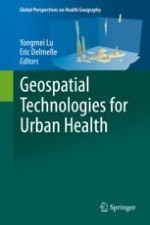2020 | OriginalPaper | Chapter
Geospatial Approaches to Measuring Personal Heat Exposure and Related Health Effects in Urban Settings
Authors : Margaret M. Sugg, Christopher M. Fuhrmann, Jennifer D. Runkle
Published in: Geospatial Technologies for Urban Health
Publisher: Springer International Publishing
Activate our intelligent search to find suitable subject content or patents.
Select sections of text to find matching patents with Artificial Intelligence. powered by
Select sections of text to find additional relevant content using AI-assisted search. powered by
